St. Vincent's Infirmary
Introduction
Text-to-speech Audio
Images
This image from about 1887, shows the first location of St. Vincent's Infirmary (1881-1889). Source: Thurman B. Rice, "The Catholic Hospitals," in One Hundred Years of Medicine: Indianapolis, 1820-1920 (1949).
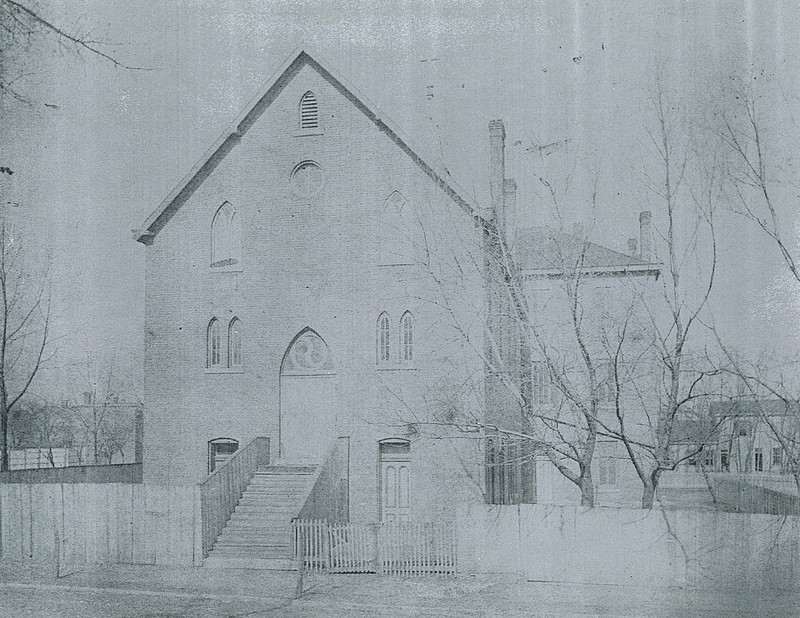
1887 City Block Map showing the location of St. Vincent's at the lower righthand corner. Source: IUPUI Center for Digital Scholarship. Creator: Sanborn Fire Insurance Map
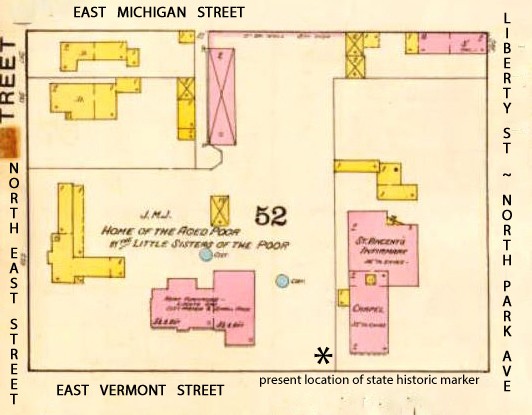
The Little Sisters of the Poor religious order's Home of the Aged Poor was at 520 East Vermont Street, sharing the city block with the first location of St. Vincent's Infirmary, and long survived it. Source: Indiana Medical History Museum.
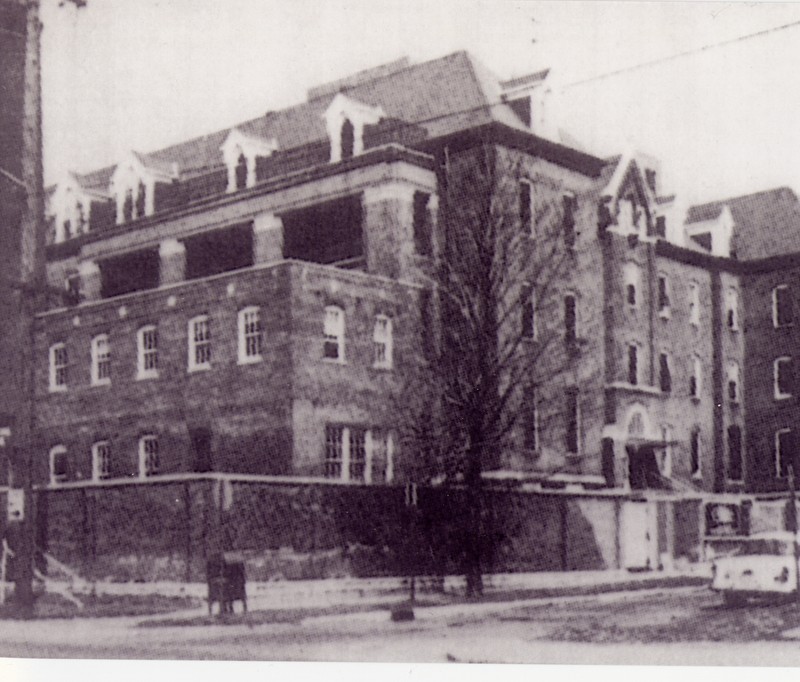
Aerial View, 1982. The first St. Vincent's Infirmary (1881-1889) stood in the southeast quadrant of the city block (lower left in this photo). Image courtesy of Indianapolis Star, January 31, 1982.
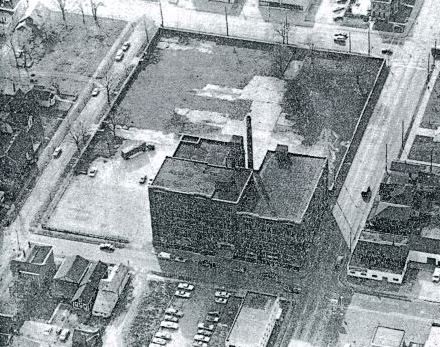
Post Card, 1910: The second location of St. Vincent's Infirmary (background, with central tower). Source: Vincentiana Collection, DePaul University Special Collections, Chicago, Illinois.
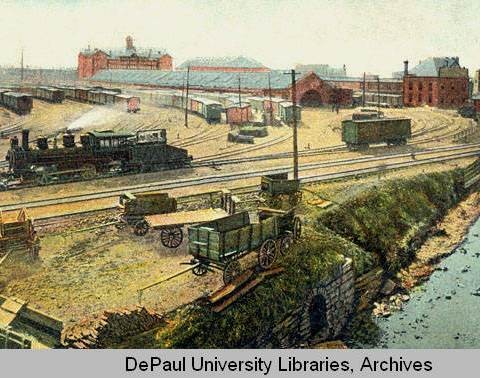
1908 Indianapolis Star headline on the Prest-O-Lite explosion and fire. Victims were treated at St. Vincent's (at its second location). Image source: Indianapolis Star June 7, 1908.
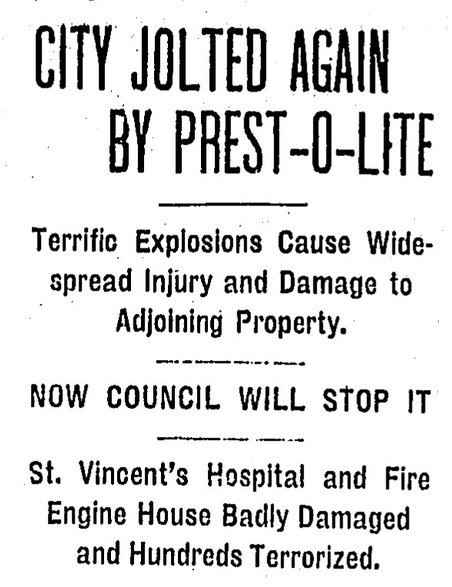
With a name change to St. Vincent Hospital, a new facility on the north side of Fall Creek Boulevard between Capitol Avenue and Illinois Street opened in 1913.In 2012, the old hospital building, became the headquarters of Ivy Tech Community.
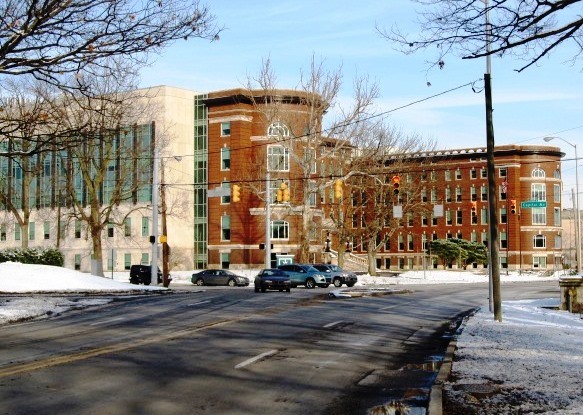
Front side of marker
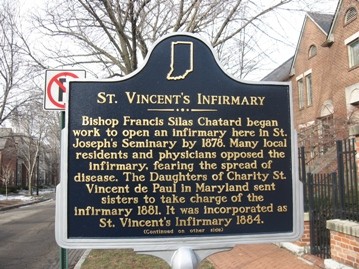
Back side of marker
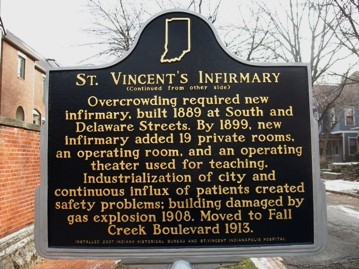
Vincent C. Caponi, the Chief Executive Officer at St. Vincent's and Msgr. Joseph Schaedel, Vicar General welcomed the new marker in 2008.
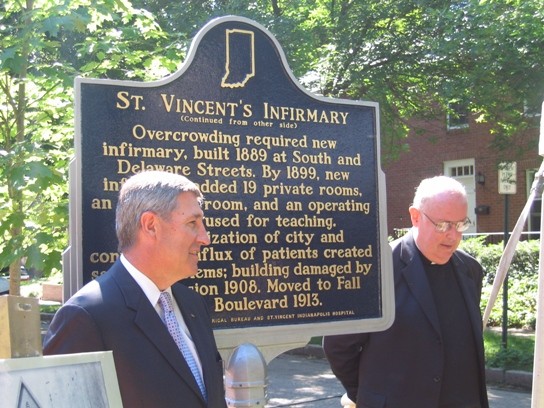
Sister Catherine Kelly (second from right), one of the oldest surviving nuns of the hospital, was among those who attended and participated in the ceremony in 2008.

In a photo from Harper’s Weekly, Soldiers stand watch outside of St.Vincent (third location) during Teddy Roosevelt’s 1902 surgery. Photo: courtesy of the Indiana Historical Society.
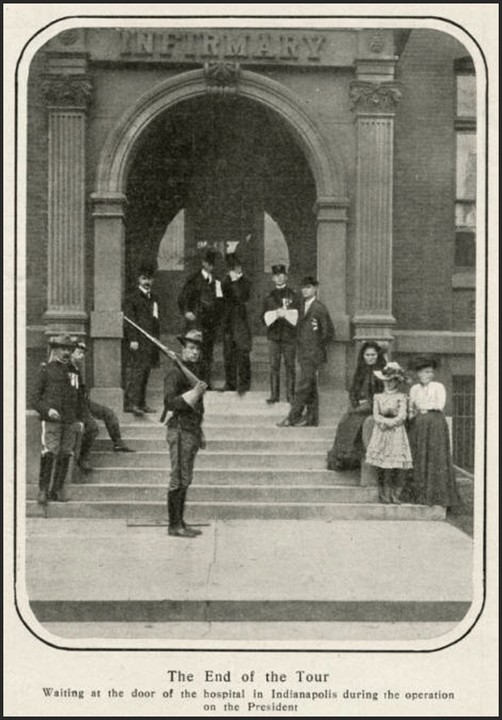
Bishop Silas Francis Chatard, who was instrumental in the creation of St. Vincent's
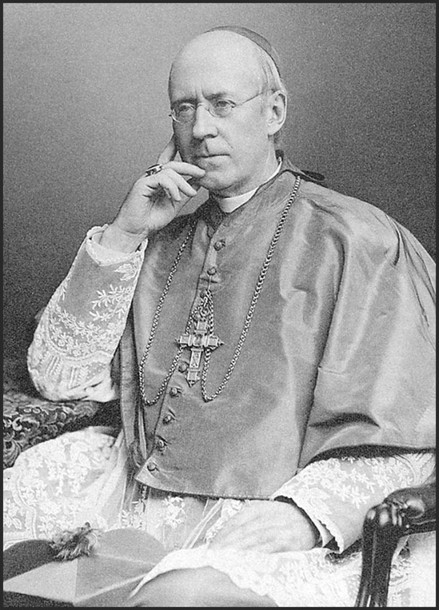
Firefighters battle the blaze from the Prest-O-Lite blast that helped drive St. Vincent’s north. Victims were helped at the Infirmary's second location. It moved 5 years later. Photo: courtesy of the Indiana Historical Society
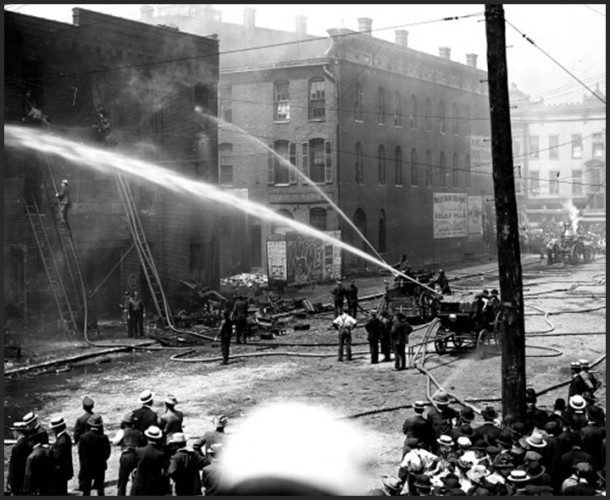
Backstory and Context
Text-to-speech Audio
Sources
"St. Vincent Hospital & Health Services" (PDF). Indiana History. Indiana Historical Society. 2016-06-23
"Children's hospital named after Peyton Manning"
